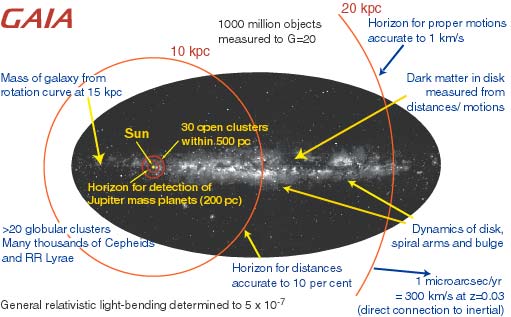| Department of Physics | University of Durham | Level One |
Searching Out the Nearest Stars
, MacRobert, A.M., Sky & Telescope, April 1993, p70.Ursa Major is one of the most well-known constellations. Chris Dolan's page on Ursa Major contains a wealth of information. The Hawaiian Astronomical Society has a wide area map of Ursa Major. Vincent van Gogh's Starry Night over the Rhone is a classical impression of Ursa Major. The SEDS site has an excellent page on the Ursa Major Moving Cluster.
The Legacy of E. E. Barnard, Mumford, G.S., Sky & Telescope, July 1987, p30.The Immortal Fire Within : the Life and Work of Edward Emerson Barnard by William Sheehan is available in the University library. This contains a very brief description of the discovery of the "Runaway Star" on page 402.
Burnham's Celestial Handbook, Volume Two: Chamaeleon to Orion, Burnham, R., Dover Publications Inc, 1978, p1251-8. This is available in the University Library.
SkyView. Stephen M. Schimpf's freeware planetarium programme for MS Windows, 1994. You will find a copy on the Lab PC. Skyview, as the name suggests, gives you a view of the sky. In fact it is just a software equivalent of a planisphere. It displays the locations of the Sun, Moon, planets and naked eye stars along with the co-ordinate system. Any location on the Earth and any date/time can be specified. Please take a copy if you are interested. Current Sky Chart for Durham can also be obtained from www.heavens-above.com. This site is also very useful for tracking satellites (see GSOC Satellite Visibility for Durham). For more information on the celestial co-ordinate system consult any good astronomy textbook, e.g. Norton's 2000.0: Star Atlas and Reference Handbook, Ridpath, I. (Ed).
FITSview 2.01. Bill Cotton's FITS viewer for Microsoft Windows. Flexible Image Transport System (FITS) is the most commonly used format for astronomical data storage. It comprises a series of text headers followed by image or tabular data. The FITSview home page is http://www.cv.nrao.edu/~bcotton/fitsview.html
Astrolab. This is a Level 3 option of the BSc/MSci Physics & Astronomy and Physics degrees at Durham in which students undertaken projects in observational astronomy using telescopes on the Physics building roof. Extensive material on this Laboratory can be found at the AstroLab Home Page.
ST9 CCD The ST-9 CCD has a light sensitive array of 512 by 512 pixels. It is made by Santa Barbara Instrument Group.
The STScI Digitized Sky Survey (see http://stdatu.stsci.edu/dss). This is an on-line source of scanned images of the entire sky. This is a mere 2 x 1011 pixels of data!
The Hipparcos Space Mission.
Home page: http://astro.estec.esa.nl/Hipparcos/hipparcos.html.
Their Education Resources page, http://astro.estec.esa.nl/Hipparcos/education.html,
contains information on High-Proper Motion Stars including Barnard's star. Access to the
Hipparcos Catalogue can be made via the on-line VizierR catalogue service at http://vizier.u-strasbg.fr/cgi-bin/VizieR.
(Enter Hipparcos as the name of the catalogue required).
Space astrometry missions planned include SIM
- Space Interferometry Mission and GAIA.

These promise to provide a new level of precision in studying the Galaxy.
ESA have an excellent web site outlining the work that will be done
with GAIA (see
Structure and Dynamics of the Galaxy).
The Close Approach of Stars in the
Solar Neighbourhood, Matthews, R.A.J., Q.J.R.Astr.Soc., 1994; 35:1-9. This
short article looks at the kinematics of stars in the Solar Neighbourhood and computes
their trajectories and distances of closest approach to the Sun.
Benedict et al. (1999) searched for sub-stellar companions of Barnard's star using the Hubble Space Telescope's Fine Guidance Sensors. While they found a null result, the experiment was only able to detect companions equal or greater than one Jupiter mass with periods longer than 150 days. Further information can found in their paper, i.e. astro-ph/9905318.
Current information on astronomy can always be found in popular astronomy magazine Sky & Telescope (available in the University Library) and at the Sky & Telescope site: http://www.skypub.com/news/news.shtml .
![]()
This page is maintained by jrl. Last updated: 2000-Nov-07